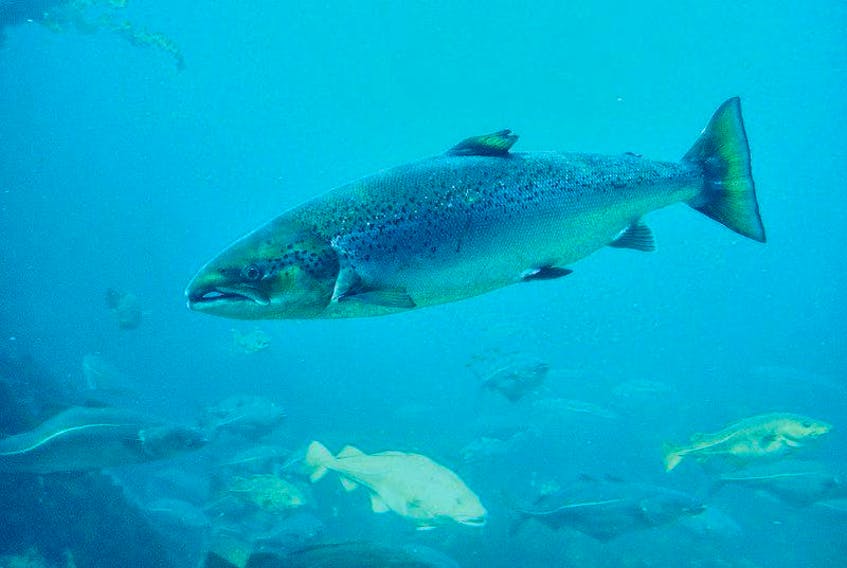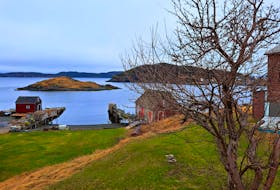The government of British Columbia has just announced the closure of 10 open net pen salmon aquaculture farms in the Broughton Archipelago and seven more to close by 2023.
These are Norwegian-owned farms operated by Marine Harvest and Cermac.
This follows a total ban on open net pen salmon aquaculture in Washington State after a major escape of over 200,000 salmon from another Norwegian farm operated by Cooke Aquaculture.
Meanwhile there are announcements virtually every day of new land-based salmon aquaculture projects in the U.S., Europe, China, Russia and even Norway. These jurisdictions know something that we don’t.
Apparently land-based salmon aquaculture works just fine everywhere else but is not feasible here in Newfoundland and Labrador.
According to the aquaculture industry and the N.L. government, salmon aquaculture will only work here if we put the open net pens in the ocean, charge nominal or no access fees and heavily subsidize the industry.
The Grieg project for Placentia Bay which is being significantly funded by the N.L. government would never get built in Grieg’s home country, Norway. The ocean access fees would be astronomical and Grieg would build it on land.
Ironically, Grieg is using a technology called Recirculation Aquaculture System (RAS) in its hatchery that is the basis of most land-based aquaculture. Grieg is an expert in RAS but when being courted by a weak regulator like N.L.
Grieg will not use RAS except in its hatchery. The RAS land-based option was required to be evaluated in the Environmental Impact Statement (EIS) but was simply dismissed by Grieg as non-feasible.
Of course the EIS was accepted by the N.L. government with a few minor conditions.
Aquaculture is not new to N.L., we have had 40 years of open net pen salmon aquaculture on our South Coast and what do we have to show for it?
The Department of Fisheries and Oceans (DFO) has tested our south coast rivers for the presence of farm-origin salmon and found that 17 of 18 rivers tested had significant interbreeding between the escaped farm salmon and the wild populations of Atlantic salmon. The genetic degradation of these wild salmon populations has important consequences and may lead to their extinction.
DFO has documented this catastrophe but done nothing to address it.
The Conne River is a good example where the count of returning adult salmon has plummeted from more than 10,000 to less than 500 in a few generations. The Conne may have already passed the point of no return.
The south coast wild salmon populations are already designated as threatened so it boggles the mind that DFO can stand back and allow major salmon aquaculture expansion with its known negative impacts in this area.
DFO and the N.L. government are responsible for this. The aquaculture industry can’t be expected to self-regulate in a responsible way.
In addition to genetic pollution, we have had numerous outbreaks of Infectious Salmon Anemia (ISA) and over $40 million of public funds paid in compensation to the salmon farmers for their losses.
The payouts were so great that the public funding program had to be discontinued. In the many ISA outbreaks where infected salmon are found today the salmon are harvested if they are of market size and the public unwittingly consumes them.
According to the Canadian Food Inspection Agency, ISA poses no harm to humans and the salmon are OK to eat. The public does not even need to know they may be eating infected salmon.
Salmon that are crowded into open net pens are also subject to infestations of pests like sea lice and have to be routinely treated with potent chemical pesticides to keep them from being eaten alive.
However wild salmon smolt that must swim through the gauntlet of sea cages after leaving their natal river have no such protection.
After surviving five years in the river a salmon smolt can be killed by a few sea lice and will never get to return to the river to spawn.
With the expansion of the Marine Harvest salmon aquaculture project, approved without the benefit of any EA whatsoever except for the hatchery, N.L. will have open net pen farms all along the south coast up to and including Placentia Bay.
Good luck to the wild salmon.
Leo White,
St. John’s
Related column:








